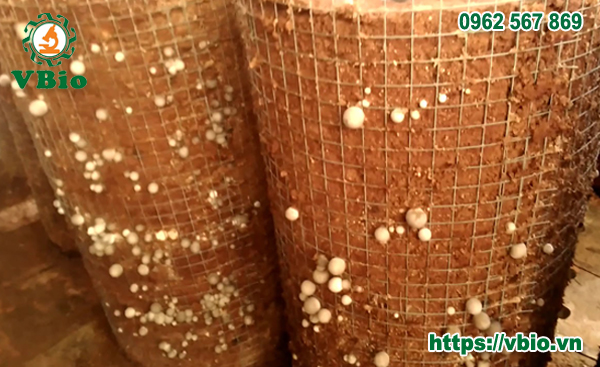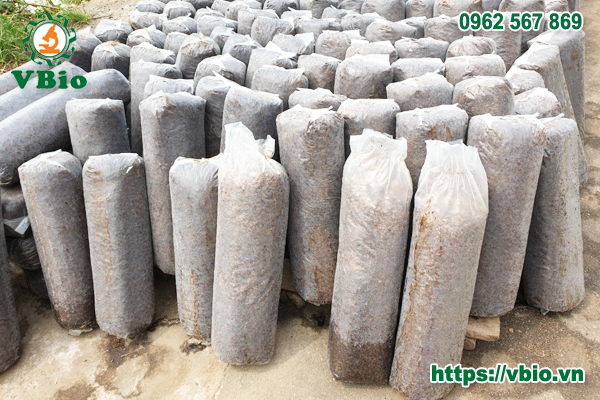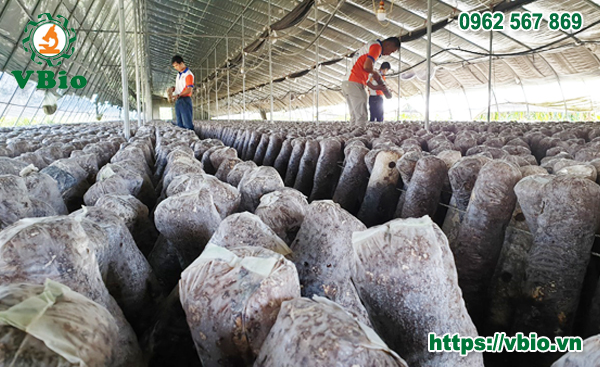How to Grow Straw Mushrooms Using Sawdust: A Sustainable and Efficient Guide

Growing straw mushrooms (Volvariella volvacea) at home or commercially using sawdust as a substrate has become an increasingly popular method, as outlined by the Institute of Applied Biology (VBio). This approach is simple, cost-effective, and eco-friendly, allowing farmers and hobbyists to produce fresh, high-quality mushrooms with minimal resources. Sawdust, a byproduct of woodworking, serves as an excellent medium for mushroom cultivation when properly prepared and combined with other organic materials. This SEO-optimized article explores the step-by-step process of growing straw mushrooms using sawdust, emphasizing its sustainability and practicality. Organized into detailed sections with clear headings, this guide provides valuable insights for anyone looking to cultivate straw mushrooms efficiently.
Why Choose Sawdust for Straw Mushroom Cultivation

Sawdust is a versatile and sustainable substrate for growing straw mushrooms, as highlighted by VBio’s detailed guide. Derived from softwoods like pine or acacia, sawdust is readily available, affordable, and highly absorbent, making it an ideal medium for mushroom mycelium growth. The fine texture of sawdust allows for even distribution of nutrients and moisture, creating optimal conditions for straw mushrooms to thrive. Unlike traditional substrates like rice straw, sawdust is easier to handle, less prone to contamination, and can be sourced year-round. When mixed with supplements like rice bran or lime, sawdust provides a nutrient-rich environment that supports robust mushroom yields, making it a preferred choice for both small-scale and commercial cultivation.
Preparing the Sawdust Substrate
The first step in growing straw mushrooms with sawdust is preparing the substrate, a process that ensures the material is clean, nutrient-rich, and conducive to mycelium growth. Begin by sourcing high-quality sawdust from untreated softwoods, avoiding any contaminated or chemically treated wood. Mix 100 kilograms of sawdust with 5-7 kilograms of rice bran to enhance nutrient content, and add 1-2 kilograms of agricultural lime to adjust the pH to a slightly alkaline level, ideal for straw mushrooms. Gradually add clean water to achieve a moisture content of 60-65%, where the sawdust feels damp but does not release water when squeezed. Thoroughly blend the mixture to ensure even distribution of nutrients and moisture, setting the stage for successful mushroom cultivation.
Sterilizing the Sawdust Mixture
Sterilization is a critical step to eliminate contaminants and ensure the sawdust substrate is safe for mushroom growth. According to VBio, the prepared sawdust mixture should be packed into heat-resistant plastic bags or containers and sterilized using steam or boiling water. Place the bags in a steamer or large pot and heat them at 100°C for 4-6 hours to kill off unwanted bacteria, fungi, or pests. Alternatively, for smaller-scale operations, the mixture can be boiled in water for 1-2 hours, then drained and cooled. Allow the sterilized sawdust to cool to room temperature (25-30°C) before proceeding, as high temperatures can damage the mushroom spawn. This step ensures a clean substrate, maximizing the chances of a successful harvest.
Inoculating the Sawdust with Mushroom Spawn
Once the sawdust substrate has cooled, it’s time to inoculate it with straw mushroom spawn. VBio recommends using high-quality spawn from a reputable supplier to ensure vigorous mycelium growth. Under sterile conditions, mix 1-2 kilograms of spawn per 100 kilograms of sawdust substrate, ensuring even distribution. Pack the inoculated mixture tightly into plastic bags, baskets, or molds, leaving small holes or openings for air exchange. The sawdust’s fine texture allows the mycelium to colonize the substrate quickly, typically within 7-10 days. Place the inoculated bags in a dark, well-ventilated area with a temperature of 28-32°C and humidity of 80-90% to promote mycelium development, setting the foundation for mushroom fruiting.
Incubating and Managing the Sawdust Substrate
Incubation is a crucial phase where the mycelium fully colonizes the sawdust substrate. Maintain the inoculated bags in a controlled environment with temperatures between 28-32°C and high humidity (80-90%). Avoid direct sunlight, as it can dry out the substrate or inhibit mycelium growth. Regularly check the bags for signs of contamination, such as green mold or foul odors, and remove any affected units immediately. After 7-10 days, when the sawdust turns white with mycelium, open the bags or transfer the substrate to fruiting beds. Lightly water the surface to maintain moisture, but avoid overwatering, as excess water can suffocate the mycelium. Proper management during incubation ensures a healthy substrate, ready for mushroom production.
Fruiting and Harvesting Straw Mushrooms
The fruiting phase begins once the sawdust substrate is fully colonized and exposed to fruiting conditions. VBio advises maintaining a temperature of 28-30°C, humidity of 85-95%, and gentle air circulation to trigger mushroom formation. Within 3-5 days, small mushroom pins will appear on the sawdust surface, growing into mature straw mushrooms within 2-3 days. Harvest the mushrooms when their caps are still closed or slightly open for optimal flavor and texture. Gently twist or cut the mushrooms at the base to avoid damaging the substrate, which can produce multiple flushes if properly maintained. With sawdust’s nutrient-rich properties, farmers can expect 2-3 harvests per cycle, yielding up to 10-15% of the substrate’s weight in mushrooms.
Sustainability and Benefits of Sawdust-Based Cultivation
Using sawdust for straw mushroom cultivation offers significant sustainability benefits, as it repurposes a woodworking byproduct into a valuable agricultural resource. The process reduces waste, aligns with circular economy principles, and minimizes reliance on traditional substrates like rice straw, which may be seasonally limited. Sawdust-based cultivation is also cost-effective, with low material costs and high yields. The method requires less labor than straw-based systems, as sawdust is easier to sterilize and handle. Additionally, used sawdust substrate can be composted into organic fertilizer, enriching soil for other crops. By adopting sawdust-based mushroom farming, growers contribute to environmental sustainability while producing fresh, nutritious straw mushrooms.
Conclusion: Sawdust as a Game-Changer for Straw Mushroom Farming

The VBio guide demonstrates that sawdust is a transformative substrate for growing straw mushrooms, offering a simple, sustainable, and efficient method for farmers and home growers. From substrate preparation to harvesting, sawdust’s absorbent and nutrient-friendly properties ensure high yields and minimal waste. Its affordability, ease of use, and eco-friendly nature make it an ideal choice for modern mushroom cultivation. Whether for personal consumption or commercial production, sawdust-based straw mushroom farming provides a reliable way to produce fresh, high-quality mushrooms while supporting sustainable agriculture. By following these steps, growers can unlock the full potential of sawdust, revolutionizing their mushroom farming practices.

